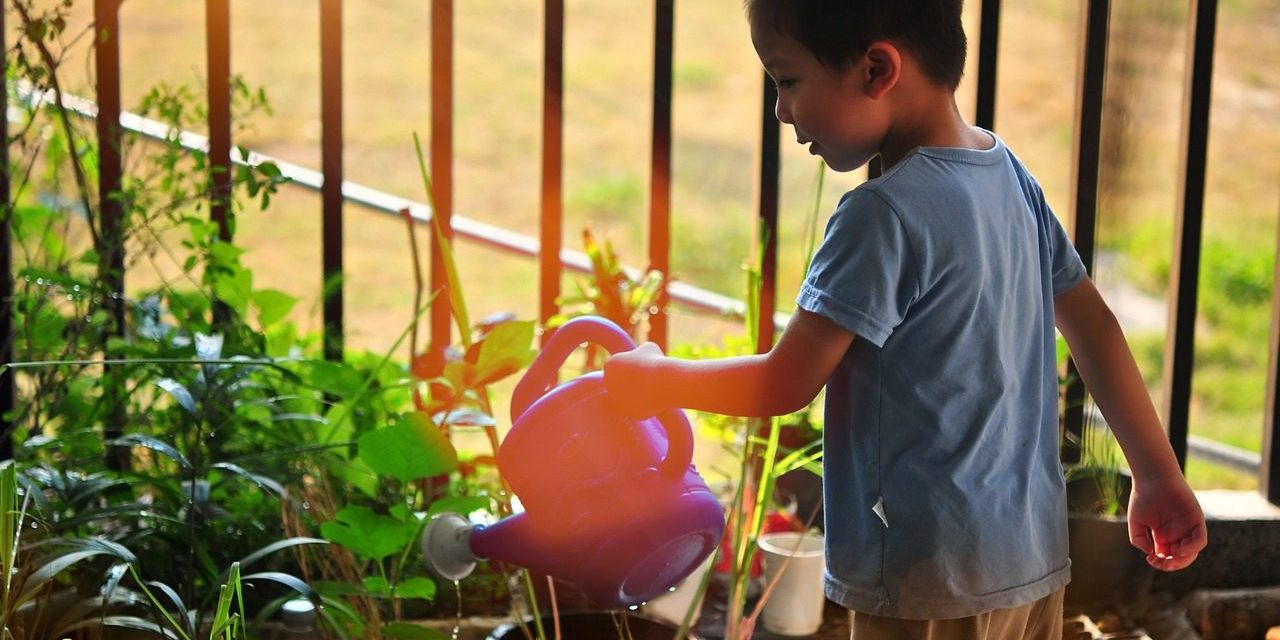We’re all well versed with the love retirees have with gardening. But the benefits of gardening are not just reserved for the elderly.
Gardening can have an incredible impact on the health and development of children as well. Gardening allows children to connect with nature and each other. They are touching, seeing, smelling, hearing, and at harvest time, tasting nature. And throughout all of these acts they are building confidence.
Here are among the many benefits of gardening for children:
· Develops fine and gross motor skills as it involves a wide range of different movements. Holding a small shovel or picking up tiny seeds to plant are good for fine motor skills while lifting a water can and digging a hole involve moving the larger body muscles and hance good for gross motor skills.
· Encourages healthy eating by teaching children how to grow their own food. It also takes time to grow a plant, teaching kids’ patience. While it is a good solitary activity, in daycares it is typically done in groups, improving the interaction between children and helping them develop social skills. There is a strong sense of accomplishment with gardening that is very beneficial for children
· Minimises stress and anxiety, a clear connection with being amidst nature.
· Improves STEM skills. Gardening relies on a certain level of scientific and mathematical reasoning. Measuring the space between plants or choosing the perfect spot for a plant based on the amount of sun it needs are both STEM-related skills.
Plants are living things that need water and nutritious soil to grow. So are the insects that live amongst the plants. Gardening is an opportunity to learn about the life cycle, another important STEM skills.
· Promotes physical and mental wellbeing.
· Gardening teaches children responsibility, encourages discovery as they wander through the garden and develops a love for nature.
How to get children interested in gardening?
While it may be hugely beneficial, kids may not take to gardening easily. Here are some tips to get their interest levels up:
· Keep it simple. Start with a small pot instead of a garden patch.
· Use the right tools. Invest in kids tools to prevent injury.
· Get creative – add a worm farm into the mix or create a garden feature with them.
· Encourage them to provide ideas on what to grow, how and where.
· Celebrate successes like the first shoot that comes out. Equally recognise and talk about the failures, celebrating the effort put into getting there.
Top plants to grow with kids
The best plants for kids are the ones they want to grow. However, in saying this not all plants are as easy to grow and it doesn’t hurt to try to steer them in the right direction. Here are a few options to throw their way:
· Carrots – the joy on kids’ faces when they pull these out is worth the effort to germinate them.
· Elephant ear plant – digging a big hole for them is the most fun part of growing these plants.
· Peas – also easy to grow.
· Zinnias – these vibrantly coloured plants just require a scatter of seeds and gentle mixing into the soil.
· Sunflowers – they smile as beautiful as the children, who generally love to measure their height against these tall beauties.
· Snapdragons – super fun for kids as they can squeeze them to make the mouth open and close.
· Strawberries – yummy to eat and easy to plant.
· Cherry tomatoes – bite sized tomatoes that kids love to eat.
While planting is fun, make sure watering and weeding are incorporated into gardening tasks for children. Have fun!




